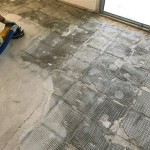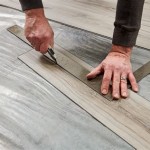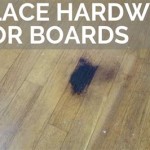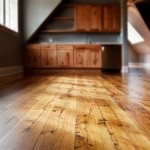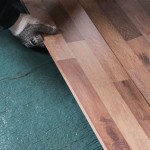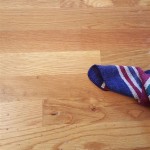How to Remove Super Glue From Wooden Floor Boards
Super glue, also known as cyanoacrylate adhesive, provides a strong and rapid bond, making it a useful tool in various applications. However, its quick-setting nature can present challenges when it accidentally spills onto surfaces like wooden floorboards. Removing super glue from wood requires a careful and methodical approach to avoid damaging the finish or the wood itself. This article provides comprehensive guidance on removing super glue from wooden floorboards, outlining various methods and precautions to consider for successful removal and restoration.
Super glue bonds through a process called anionic polymerization, where monomers react rapidly in the presence of moisture. This reaction creates long, strong polymer chains, resulting in a rigid and durable adhesive. When super glue comes into contact with wood, it penetrates the porous surface and forms a tight bond, making removal difficult without proper techniques. Factors such as the type of wood, the finish applied, and the curing time of the glue all influence the removal process. A proactive and informed approach is necessary to minimize the risk of damage and ensure the wooden floorboards retain their aesthetic and structural integrity.
Understanding the Nature of Super Glue and Wood Finishes
Before attempting any removal method, it is vital to understand the characteristics of both super glue and the wooden floor's finish. Super glue is resistant to many common solvents, but certain chemicals can weaken its bond. The type of finish on the wood--whether it’s polyurethane, varnish, wax, or oil-based--will also determine which removal methods are safe to use. Some solvents that are safe for polyurethane finishes might damage a wax or oil-based finish. Therefore, identifying the type of finish is a critical first step.
Wood itself is a porous material, and the super glue can seep into the grain, making it challenging to remove from the surface alone. The glue's bond to the wood fibers needs to be broken down without causing abrasion or discoloration. Applying heat may soften some adhesives, but it can also damage certain types of wood finishes, causing them to blister or discolor. Similarly, aggressive scraping can remove the glue but also gouge or scratch the wooden surface.
Testing any removal method on an inconspicuous area of the floor, such as under furniture or inside a closet, is highly recommended. This allows observation of how the chosen method affects the finish and the wood itself. If discoloration, softening, or other adverse reactions occur, an alternative approach should be selected. The overall goal is to remove the super glue while preserving the original condition of the wooden floor.
Methods for Removing Super Glue
Several methods can be employed to remove super glue from wooden floorboards, each with its advantages and disadvantages. The choice of method will largely depend on the severity of the spill, the type of finish, and the resources available. Below are several options, ranging from gentle to more aggressive approaches.
Method 1: Acetone (Nail Polish Remover)
Acetone is a common solvent that can dissolve super glue. However, it should be used with caution, especially on floors with delicate finishes. Pure acetone is preferable, but acetone-based nail polish remover can be used as well. Before applying acetone, ensure the area is well-ventilated. Soak a cotton ball or clean cloth with acetone and gently blot the super glue. Avoid rubbing, as this can spread the glue or damage the finish. Allow the acetone to sit on the glue for a few minutes to soften it. After a few minutes, gently wipe the area with a clean cloth. Repeat the process as necessary. Once the glue is removed, clean the area with a damp cloth and then dry it thoroughly. Note that acetone can damage shellac and lacquer finishes, so careful testing is crucial before widespread application.
Method 2: Warm Soapy Water
For small spills or relatively fresh glue, warm soapy water may be sufficient. Fill a bowl with warm water and add a mild dish soap. Soak a clean cloth in the soapy water and wring out the excess. Gently place the cloth on top of the super glue and allow it to sit for 15-20 minutes. The warm water helps to soften the glue, while the soap acts as a lubricant. After soaking, try to gently peel or scrape the glue away using a plastic scraper or a blunt edge, like a credit card. Avoid using sharp objects that could scratch the floor. This method is gentler than using solvents and less likely to damage the finish, but it may require more time and effort. After removing the glue, clean the area with a fresh, damp cloth and dry thoroughly.
Method 3: Heat (Hair Dryer)
Applying heat can soften the super glue, making it easier to remove. Using a hair dryer on a low setting, direct the heat onto the super glue spill for several minutes. Check the glue’s consistency periodically. Once the glue has softened and become more pliable, attempt to gently peel or scrape it away with a plastic scraper or similar tool. Be cautious not to overheat the area, as excessive heat can damage the wood or the finish. Keep the hair dryer moving and avoid concentrating the heat on one spot for too long. After removal, clean the area with a damp cloth and dry it thoroughly. This method can be particularly effective when combined with other techniques, such as applying warm soapy water first.
Method 4: Cooking Oil or Mineral Oil
Oils can help to break down the bond of super glue, especially on non-porous surfaces. Apply a small amount of cooking oil (such as vegetable or olive oil) or mineral oil directly onto the super glue. Allow the oil to sit for several hours, or even overnight, to penetrate the glue. The oil will help to weaken the adhesive bonds, making it easier to remove. After soaking, gently scrape the glue away with a plastic scraper or a blunt edge. Clean the area thoroughly with a degreasing cleaner and a damp cloth to remove any oil residue. Dry the area completely. This method is gentle and generally safe for most wood finishes, although testing in an inconspicuous area is still recommended.
Method 5: Sanding (As a Last Resort)
Sanding should be considered as a last resort, as it involves removing a layer of the finish and potentially the wood itself. This method is only appropriate if the other methods have failed and the damage is localized. Use fine-grit sandpaper (220-grit or higher) and gently sand the area affected by the super glue. Sand in the direction of the wood grain to minimize visible scratches. Be careful not to sand too deeply, as this can create an uneven surface. After sanding, clean the area thoroughly to remove any sanding dust. The sanded area will need to be refinished to match the surrounding floor. This may involve applying stain, sealant, and a topcoat. Consult a professional if unsure about the refinishing process. Sanding can permanently alter the appearance of the floor, so it should be approached with caution and careful consideration.
Precautions and Safety Measures
When removing super glue from wooden floorboards, it is essential to prioritize safety and take necessary precautions to prevent injury or further damage. Always work in a well-ventilated area, especially when using solvents like acetone, to avoid inhaling harmful fumes. Wear gloves to protect the skin from the adhesive and solvents. Eye protection, such as goggles, is recommended to prevent accidental splashes. Keep children and pets away from the work area. When using heat, be cautious to avoid burns and never leave the heat source unattended. If sanding, wear a dust mask to prevent inhalation of fine particles. Properly dispose of any used materials, such as cloths or cotton balls, in a sealed container to prevent fire hazards, especially those soaked with solvents. By following these safety measures, the removal process can be completed safely and effectively.
During the removal process, avoid applying excessive force or using sharp tools, as this can cause scratches, gouges, or other damage to the wooden floorboards. Test any cleaning solutions or solvents on an inconspicuous area first to ensure they do not react negatively with the finish. When using solvents, apply them sparingly to prevent them from seeping into the wood and causing discoloration or swelling. Regularly check the progress of the removal to avoid overexposure to heat, solvents, or prolonged scraping. If unsure about any step of the process, consult a professional floor restoration specialist for guidance. Taking these precautions can minimize the risk of further damage and ensure a successful removal.
After removing the super glue, thoroughly inspect the affected area for any remaining residue or damage. Clean the area with a damp cloth and a mild cleaning solution to remove any traces of solvents or oils. Dry the area completely to prevent moisture damage. If the finish has been affected, consider applying a matching finish or sealant to restore the original appearance. If the wood has been scratched or gouged, wood filler can be used to repair the damage before refinishing. Following these post-removal steps will help to maintain the integrity and appearance of the wooden floorboards.

Removing Glue Or Adhesive From Hardwood Floors The Speckled Goat

Removing Glue Or Adhesive From Hardwood Floors The Speckled Goat

4 Ways To Remove Glue From Wood Wikihow

4 Ways To Remove Glue From Wood Wikihow

How To Remove Glue From Hardwood Floor 7 Methods Diy

How To Remove Vinyl Glue From Hardwood Floor Hometalk

How To Remove Gorilla Glue From Wood 7 Steps With S

Repairing Loose Spots Just Like A Watermelon Wood Floor Business

How To Remove Glue From Laminate Flooring

Replace A Damaged Board In Laminate Floor Rw Supply Design
See Also

